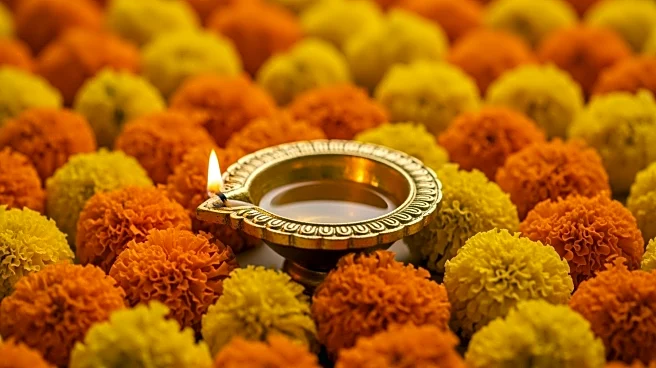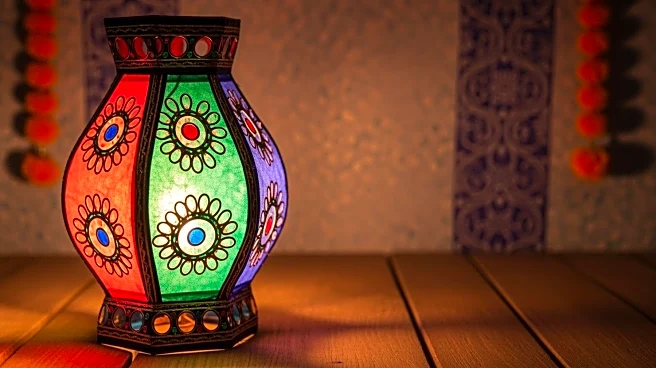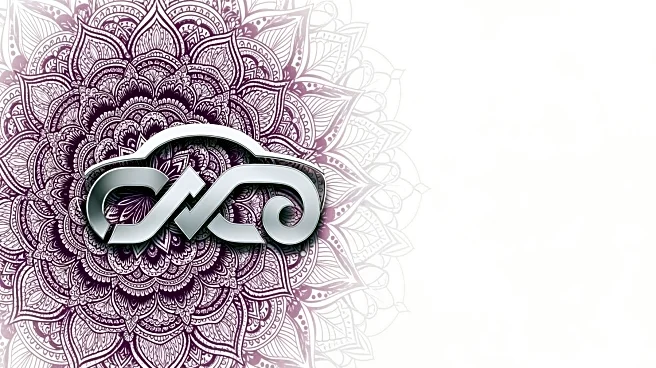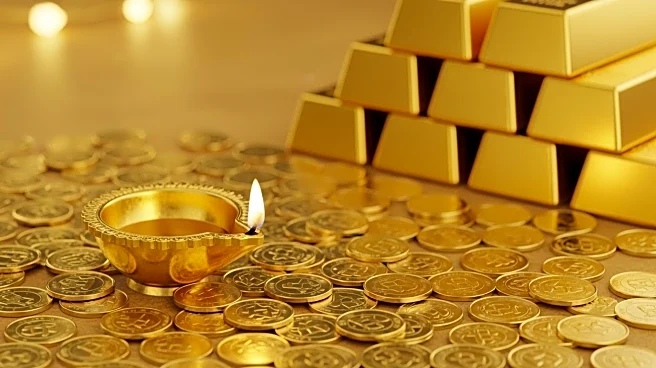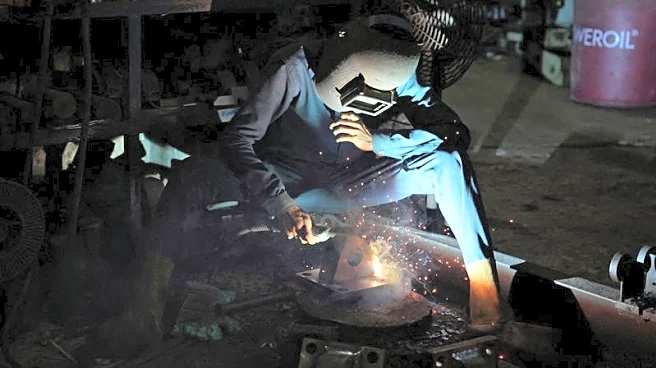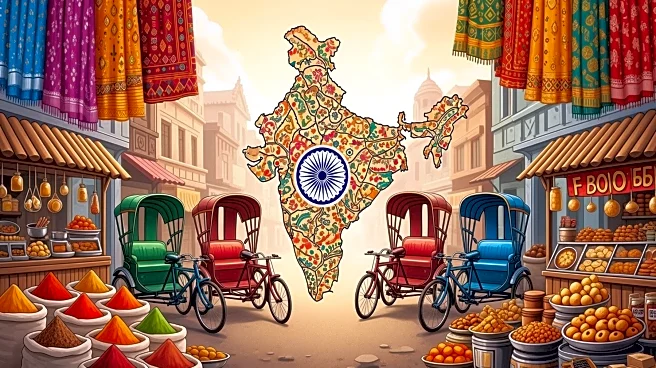What's Happening?
During the Diwali festival, Indian consumers spent between $8 billion and $11 billion on gold, with a significant shift towards purchasing bars and coins over traditional jewelry. This trend was observed in Mumbai's Zaveri Bazaar, where gold sales reached
over 40 tons on the first day of Diwali. The demand for gold coins and bars has increased, with some retailers warning of potential shortages. This shift is attributed to the rising gold prices, which have increased by 55% this year, and the perception of gold as a stable investment amid economic uncertainties.
Why It's Important?
The surge in gold purchases during Diwali reflects broader economic trends and consumer behavior in India, the world's second-largest gold market. The preference for bars and coins over jewelry indicates a shift towards viewing gold as an investment rather than just a cultural or ornamental asset. This trend could influence global gold markets, as increased demand from India may impact prices and supply chains. Additionally, the strong demand highlights the role of gold as a hedge against economic instability, particularly in emerging markets.
Beyond the Headlines
The increased demand for gold in India during Diwali also underscores cultural and economic factors driving consumer behavior. Gold has long been a symbol of wealth and prosperity in Indian culture, and its purchase during festivals is seen as auspicious. The shift towards investment-oriented purchases may reflect changing attitudes towards wealth preservation and financial security. This trend could have long-term implications for the global gold market, influencing production, pricing, and investment strategies.
